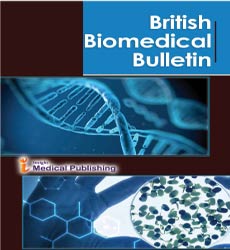ISSN : 2347-5447
British Biomedical Bulletin
Soft Computing: A Comprehensive Overview and Applications
Mithilesh Amin*
Department of Biomedical Engineering, Lovely Professional University, Phagwara, Punjab, India
- *Corresponding Author:
- Mithilesh Amin
Department of Biomedical Engineering,
Lovely Professional University, Phagwara, Punjab,
India,
Email: mithileshamin45@gmail.com
Received date: May 09, 2023, Manuscript No. IPBBB-23-17014; Editor assigned date: May 11, 2023, PreQC No. IPBBB-23-17014(PQ); Reviewed date: May 25, 2023, QC No IPBBB-23-17014; Revised date: June 01, 2023, Manuscript No. IPBBB-23-17014 (R); Published date: June 08, 2023, DOI: 10.36648/2347-5447.11.2.1
Citation: Amin M (2023) Soft Computing: A Comprehensive Overview and Applications. Br Biomed Bull Vol. 11 Iss No.2:001
Introduction
Soft computing is a subfield of computer science that encompasses various computational techniques aimed at dealing with imprecision, uncertainty, and partial truth. This research article provides a comprehensive overview of soft computing, including its fundamental concepts, methodologies, and applications. The article emphasizes the three major components of soft computing: fuzzy logic, neural networks, and evolutionary computation. Furthermore, it explores the synergy between these components and their integration into hybrid systems. The article also highlights the wide-ranging applications of soft computing in various domains such as pattern recognition, optimization, control systems, and decision-making. Overall, this research article aims to present a comprehensive understanding of soft computing and its practical implications. Soft computing is a multidisciplinary field that integrates different computational techniques to handle complex problems characterized by uncertainty, ambiguity, and imprecision. This section provides a brief introduction to soft computing, its motivation, and its distinguishing features. It also outlines the structure and objectives of the research article.
Components of Soft Computing
This section delves into the three main components of soft computing: fuzzy logic, neural networks, and evolutionary computation. It explains the underlying principles and methodologies of each component and highlights their strengths and limitations. Additionally, it discusses the potential benefits of combining these components to create hybrid systems that leverage their complementary characteristics. Fuzzy logic is a mathematical framework that deals with uncertainty and imprecision by allowing partial truth values. This section explores the fundamental concepts of fuzzy sets, fuzzy logic operations, and fuzzy inference systems. It also discusses fuzzy control systems and their applications in various domains such as industrial automation, robotics, and decision-making. Neural networks, inspired by the structure and function of the human brain, are computational models capable of learning and making predictions from data. This section provides an overview of neural network architectures, including feed forward, recurrent, and convolutional neural networks. It also discusses learning algorithms, such as back propagation, and explores the applications of neural networks in pattern recognition, image processing, and prediction tasks. Evolutionary computation techniques mimic the principles of natural evolution to solve optimization and search problems. This section covers the fundamentals of genetic algorithms, genetic programming, and evolutionary strategies. It explores their mechanisms of selection, crossover, and mutation, as well as their applications in optimization, data mining, and feature selection.
Hybrid Systems
The synergy between fuzzy logic, neural networks, and evolutionary computation has led to the development of hybrid systems that leverage the strengths of each component. This section discusses various approaches to combining these components, including fuzzy neural networks, neuro-fuzzy systems, and evolutionary neural networks. It highlights the advantages of hybrid systems and presents examples of their applications in real-world scenarios. Soft computing techniques find extensive applications across diverse domains. This section presents case studies and examples of soft computing applications in areas such as image processing, data mining, robotics, financial forecasting, and healthcare. It demonstrates the effectiveness of soft computing approaches in addressing complex problems that are difficult to solve using traditional methods. This section addresses the current challenges and limitations of soft computing techniques. It discusses issues related to interpretability, scalability, and the need for domainspecific expertise. Furthermore, it outlines potential future directions for soft computing research, including the integration of deep learning, explainable AI, and advancements in hardware for accelerating computations. The research article concludes by summarizing the key points discussed throughout the paper. It emphasizes the importance of soft computing techniques in dealing with complex problems characterized by uncertainty and imprecision. The article also highlights the wide-ranging applications of soft computing and the potential for further advancements in this field.
Open Access Journals
- Aquaculture & Veterinary Science
- Chemistry & Chemical Sciences
- Clinical Sciences
- Engineering
- General Science
- Genetics & Molecular Biology
- Health Care & Nursing
- Immunology & Microbiology
- Materials Science
- Mathematics & Physics
- Medical Sciences
- Neurology & Psychiatry
- Oncology & Cancer Science
- Pharmaceutical Sciences
